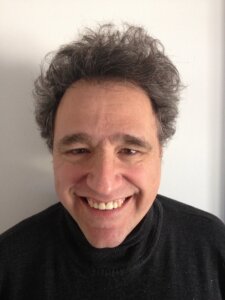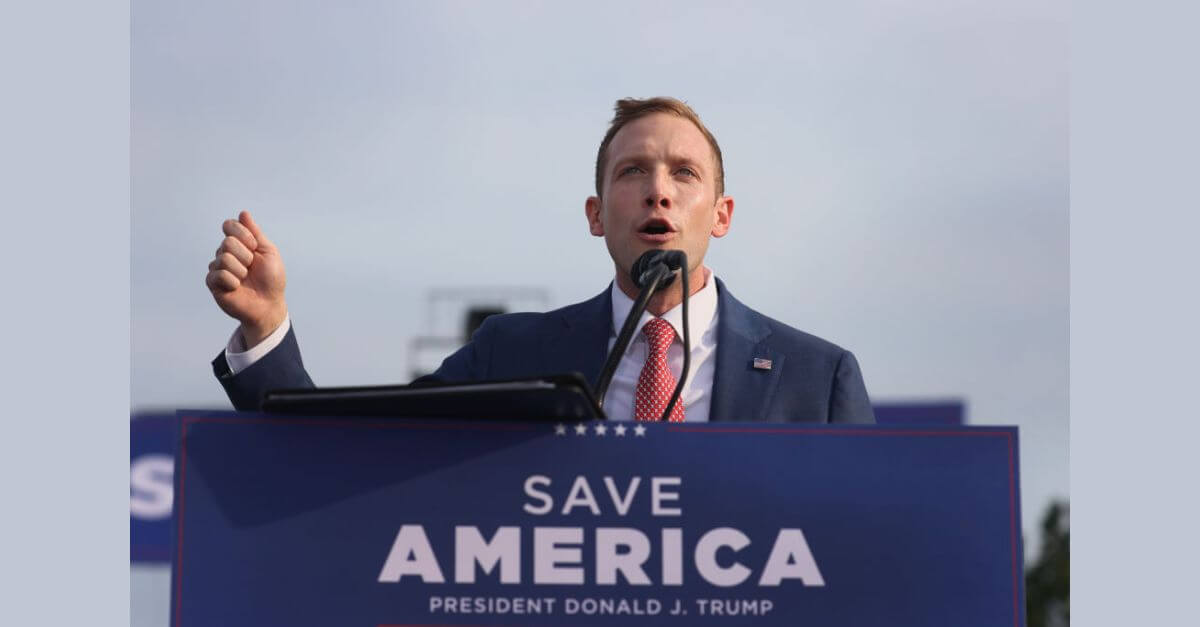DC’s new Jewish museum highlights Jews who shaped the nation’s capital, from a Confederate spy to RBG
It explores the history of one of the most consequential Jewish communities in the country — warts and all
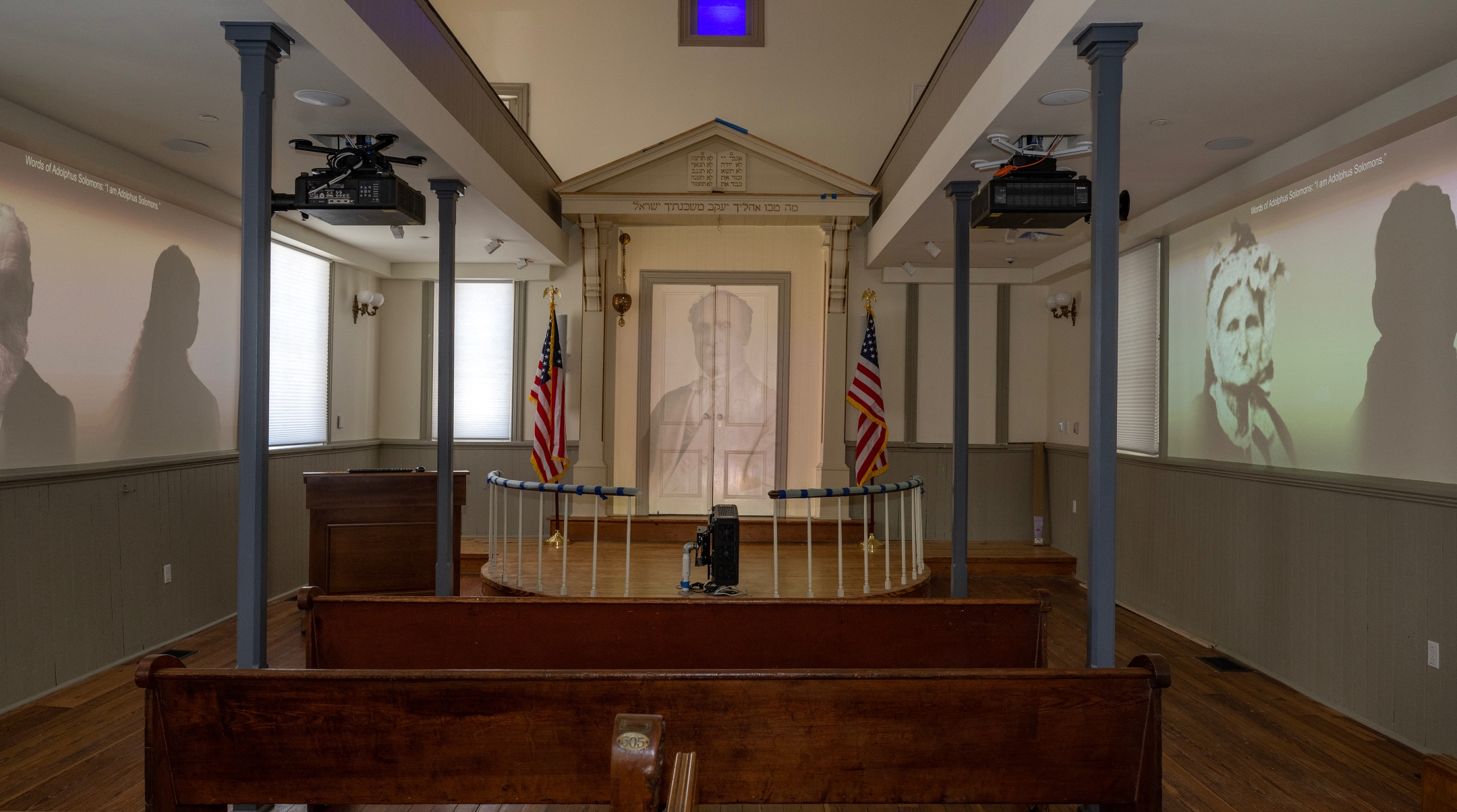
The interior of an 1876 synagogue that is the core of the new Capital Jewish Museum in Washington D.C., June 1, 2023. (Ron Sachs/Consolidated News Photos)
WASHINGTON (JTA) – Washington, D.C.’s new Jewish museum features at least two notorious women from history.
One is Ruth Bader Ginsburg, the first Jewish woman to serve as a Supreme Court justice, who was dubbed “Notorious RBG” late in her life by a cluster of fans. When the Capital Jewish Museum opens next week, it will launch with Ginsburg at its center when a traveling exhibit on her life has its final stop here.
The other is the 19th-century figure Eugenia Levy Phillips, whom the museum characterizes as “notorious” without irony.
“One of DC’s most notorious Confederate sympathizers, Eugenia Levy Phillips (1891-1902) came to town in 1853 with her congressman husband, Philip Phillips (1807-1884) of Alabama,” one of the exhibits says. “Eugenia, a spy, delivered Union military plans and maps to Confederate President Jefferson Davis.”
Another description of Levy Phillips in the museum is more straightforward: “SPIED for the CONFEDERACY,” it says below her photo.
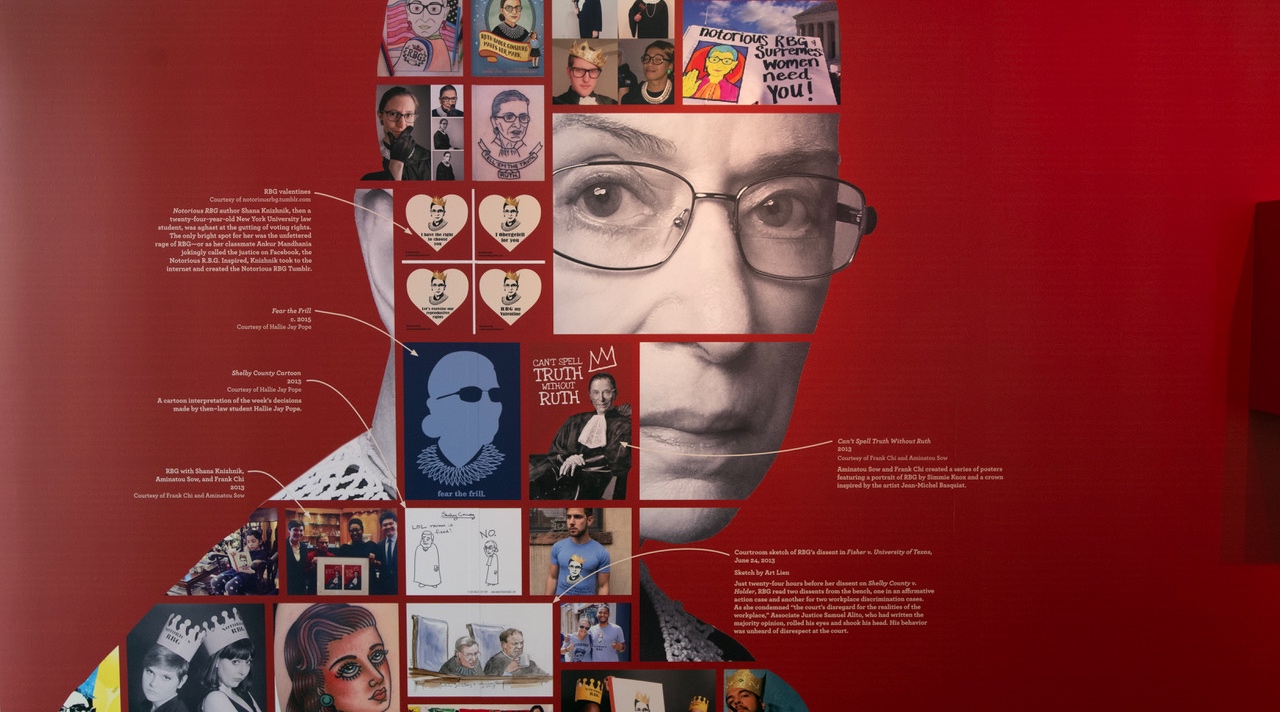
An exhibit on Ruth Bader Ginsburg at the new Capital Jewish Museum in Washington D.C.;, June 1, 2023. (Ron Sachs/Consolidated News Photos)
The late justice and spy are two of an assemblage of notable Jews throughout history who grace the Capital Museum, which opens next Friday in northwest Washington’s Judiciary Square neighborhood, which was a local center of Jewish life more than a century ago. Showcasing the warts-and-all history of Jews in and around the nation’s capital — both prominent officials and ordinary denizens of the city — is the point of the museum, its directors say.
“Jews are a Talmudic people, we like to argue, we like to look at different sides of a story,” Ivy Barsky, the museum’s interim executive director, said Thursday at a tour for members of the media. Sarah Leavitt, the museum curator, involved the Jewish idea of “makhloket l’shem shamayim,” Hebrew for “an argument for the sake of heaven” — in other words, for sacred purposes.
“We’re telling the story in this museum in a Jewish way,” Leavitt said. “So that it’s not just that we might not agree, but actually the disagreement is important and preserving those disagreements is important.”
Barsky, who was previously the CEO of the National Museum of American Jewish History in Philadelphia, said that in relating the local history of Washington’s Jews, the new museum fills a gap. Unlike many of the country’s other longstanding Jewish communities, Washington attracted Jews not because it was a port but because it was the center of government. Like the district’s broader community, Jews in the area have been prone to transitioning in and out of the city.
“Lots of our stories start in other places, with folks who end up in D.C.,” Barsky said. “This is a unique community, especially because the local business is the federal government.”
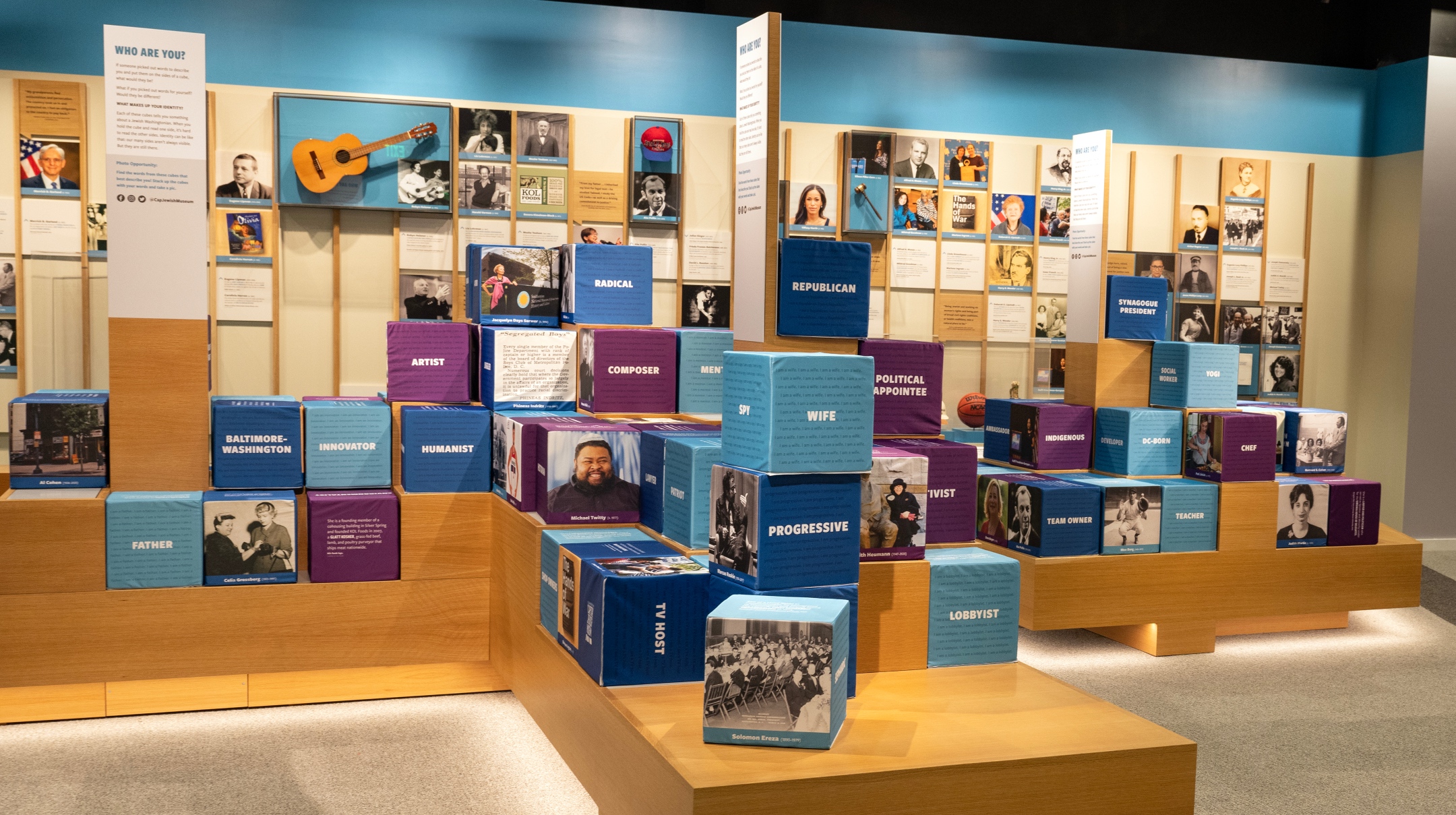
An exhibit at the new Capital Jewish Museum asks visitors, “Who are you? and features a diverse array of Jews , in Washington D.C., June 1, 2023. (Ron Sachs/Consolidated News Photos)
Jews have been in Washington since it was established in 1790, and the area now includes some 300,000 Jews, according to a 2017 study. The museum chronicles that community’s expansion from the capital to the Maryland and the Virginia suburbs, driven at times by Jews joining “white flight” — when white residents left newly integrated neighborhoods — and other times by restrictions that barred Jews from certain areas.
Larger historical events have also at times played a role: The Jewish population in the city grew in the 1930s and 1940s because of the expansion of government during President Franklin Delano Roosevelt’s New Deal and World War II.
An exhibition asks visitors “Who are you?” and features a diverse range of Washington Jews, past and present, as well as others with quirky biographies, including Tom King, a CIA spy who became a comic book writer.
The changing fortunes of American Jewry are embedded in the date the museum opens, June 9: On that date in 1876, Ulysses Grant was the first president to attend synagogue services, when he helped dedicate the new building of the Adas Israel congregation. Fourteen years earlier, as a Union general, he infamously expelled the Jews of Paducah, Kentucky, accusing them of being war speculators. President Abraham Lincoln rescinded the order, which has been described as “the most sweeping anti-Jewish regulation in all of American history,”
Esther Safran Foer, the museum’s president and the former executive director of the city’s historic Sixth & I synagogue, said Grant’s presence in 1876 in the Adas Israel building was emblematic of the upward trajectory of American Jewry. “He sat here for more than three hours in the heat, no air conditioning, and he even made a generous personal contribution,” she said.
The museum’s core is the 1876 building that Grant helped dedicate. It has since been physically moved in its entirety three times in order to preserve it, most recently in 2019 as part of the initiative to build the museum, which began in 2017. The museum’s upper floor reproduces the sanctuary, with the original pews. Its walls, however, are renovated: they display an audiovisual chronicle of the area’s Jews.
The museum’s permanent exhibition aims to traverse that history in other engaging ways as well. The same section that highlights Levy Phillips’ adventures (including her diary’s account of her arrest — “I am not in the least surprised Sir” she told the agent who had come to take her away) also mentions Rabbi Jacob Frankel, who was commissioned by Lincoln during the Civil War as the first Jewish military chaplain.
A photo of Jews and Blacks joined in a bid to desegregate a local amusement park in the early 1960s gets equal billing with one of Sam Eig, a Jewish developer who in 1942 advertised the new Maryland suburb he built as “ideally located and sensibly restricted,” a euphemism for not allowing Black people to buy property.
Interactive exhibits include a Seder table that encourages guests to debate immigration, Israel and civil rights. Parts of the museum’s exhibition recount Jewish debates over pivotal issues such as those and others, including abortion.
Ginsburg will be the museum’s first main attraction, and it makes clear she was a role model. The special exhibition on her life and career includes a glamorous photo of the two Jewish women who coined the “Notorious RBG” nickname, Shana Knizhnik and Irin Carmon. Visitors can go into a closet and don duplicates of Ginsburg’s judicial robes.
One of the first events is on July 12, when museum goers will join in fashioning the special “I Dissent” collars that Ginsburg would famously wear over her robes when she was ready to dissent from the bench.
Jonathan Edelman, the museum’s collections curator, described one prized collection — items he persuaded disability rights advocate Judy Heumann to donate before she died in March.
“Judy’s is a Washington story,” he said. “She came to this city first as an outsider as a protester protesting for disability rights. And then she came back to the city as an insider working within the government to make change both in D.C. government and in the federal government.”
This article originally appeared on JTA.org.



